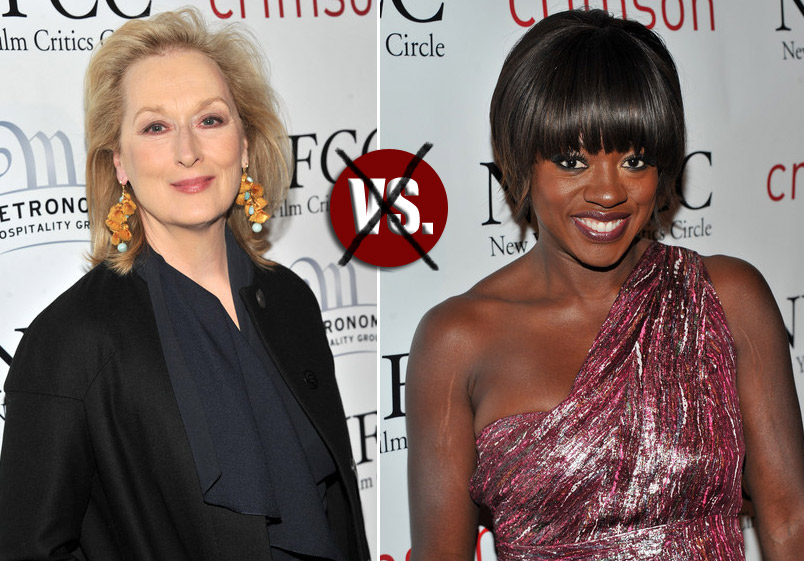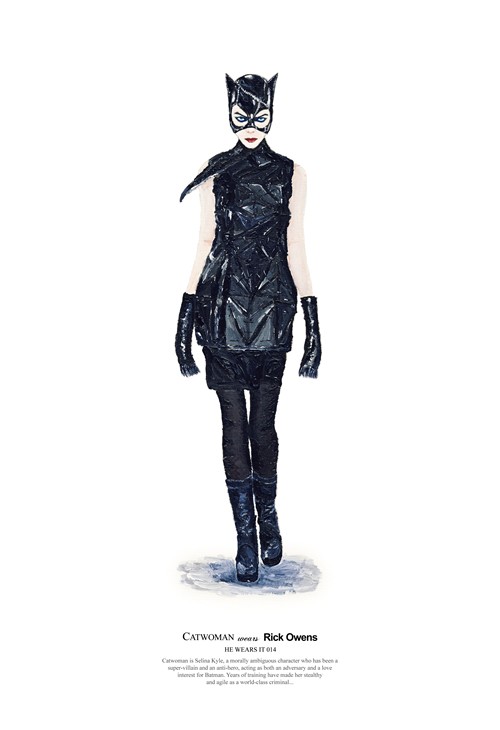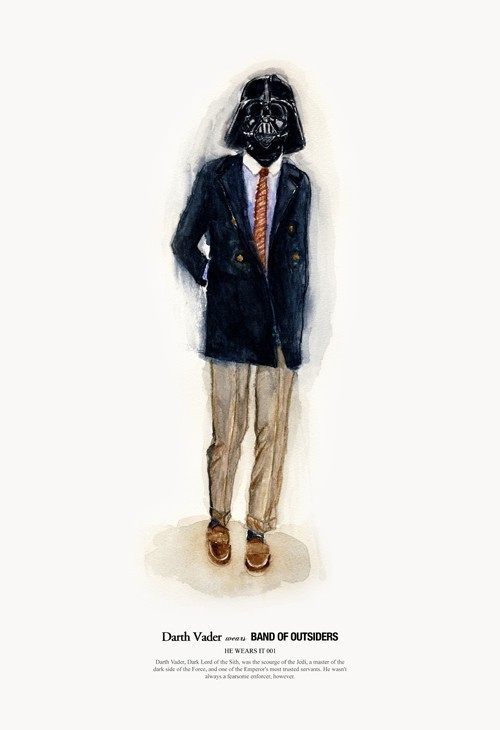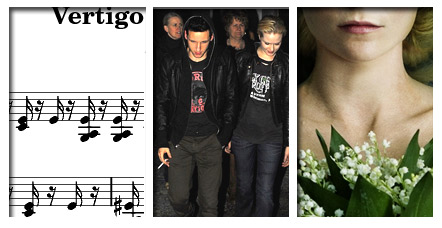So I spent all of last night exuberantly "Oh No You Maggie Smith'nt!"* with friends over the 2 hour season premiere of Downton Abbey. Then I spent the better part of today at a table full of Oscar voters picking their brains (in a polite conversational way, mind you) at a luncheon for The Artist. More on both of those events soon but between last night and today, so many OscarQuakes or at least golden tremors.
*joke stolen from Patton Oswalt
Let's discuss four of them immediately!
 1. Hunger Games beauty Jennifer Lawrence will announce the Oscar nominations.
1. Hunger Games beauty Jennifer Lawrence will announce the Oscar nominations.
Usually people dress somewhat sedately for that super AM event but we're hoping Jennifer pulls out another one of those va va voom numbers she kept finding for last year's awards circus. The nomination event happens so early in the morning and if Jennifer wears skin tight white or form fitting red again, that's better than a pot of steaming coffee as an eye opener.
P.S. Is the publicity team behind Hunger Games the hardest working team in showbiz? You know this is all part of that evil world domination blitz.
2. Documentary Rule Changes
Michael Moore and others proposed some Oscar Rule changes to the Academy and they've been adopted. The most controversial one, which we're totally fine with, involves requiring a review from the Los Angeles or the New York Times. The idea behind this rule is that the papers have a policy of reviewing each film that opens for a full week engagement. But it seems silly to stipulate that a review is required when the whole point is to get the movie in theaters for a full week. Why not just say "must play a week in Los Angeles and New York City to qualify?" Seems strange to put the qualification requirement on newspapers. According to Michael Cieply at the New York Times documentarians are not on board with these changes which would drastically reduce the number of qualifying entries.
I take a rather hard stance on this topic all the time and I assure you that it is not an anti-filmmaker stance. My stance is only a pro audience stance. I do not believe that films should be eligible for awards if they are not playing for the public. I'm tired of this elitist film culture where people only show their films in very discreet ways for very select audiences and hope that they'll win awards by which they will then try to lure paying audiences. On an individual case by case basis it's easy to see why the vast majority of pundits and filmmakers side with filmmakers on this topic and back these rules that make peekaboo engagements possible. But if you back up and look at the full picture it is much healthier for the survival of cinema if theatrical engagements are required and the audience is included. If movies aren't made to be seen there is no point in making them. If you want an engaged audience you have to create one. And to create one you've got to get the films out there in the marketplace.
3. Makeup Citations
The bakeoff for Oscar's continually confounding Best Makeup category has finally happened and seven films are moving on to compete for the 3 wide nomination list. I've never found any reasonable explanation as to why this category has such a tiny amount of nominees given that a huge portion of movies require wig and makeup and prosthetics work but it is what it is. Despite "Best" often equating with "Most" J. Edgar and Green Lantern did not make the cut. Neither did that much talked about Michelle-to-Marilyn transformation wow them.
So your finalists go like so...

- Albert Nobbs
- Anonymous
- The Artist
- Gainsbourg: A Heroic Life
- Harry Potter and the Deathly Hallows Part 2
- Hugo
- The Iron Lady
I am not remotely a fan of The Iron Lady but I think it'd be a very deserving nomination in that category since the makeup work on Streep is just flawless / transformative. The rest of the field I don't have strong opinions of. Do you? It's worth noting that no Harry Potter film has ever been nominated for Makeup though a few of the previous films have made it to pre-nomination lists like this one.
4. Foreign Film Finalists Will Be Announced on... TBA?
I wish I knew when. If so I could plan better. Every day I wake up in fear that I will miss my chance to tell you how much I liked movie A or B before Oscar cuts them in the winnowing process, he says pessimistically. And every day I run out of time. I need a deadline! Last year they announced a week ahead of the regular nominations so I guess that gives me... 5 or so more days?
 Left (France's Declaration of War) Right (Denmark's SuperClásico with the always awesome Paprika Steen)
Left (France's Declaration of War) Right (Denmark's SuperClásico with the always awesome Paprika Steen)
For the record in case I get no other chance to say it should the Academy not respond well to them the 'Movie A' in question is France's cancer dramedy Declaration of War which is super lively, passionate, funny, and tearful (Take that 50/50... You are nothing to me now!) and the 'Movie B' in question is Denmark's divorce comedy SuperClásico starring the inimitable Paprika Steen (Applause) who you already know I 'stan for whenever I get the chance.
I interviewed her recently (we'll get to that eventually) and much to my delight she dubbed me a "nerdy film blogger!" Her exact words! Now I love her even more. I wish American directors would hire her because she speaks English fluently and is a great actress who can do both intense drama and spiky comedy. What more do they need? Why should the Nykqvists, Mikkelsens and Skarsgaards be the only Scandinavian actors Hollywood has on speed dial? Paprika can act circles around so many people. Get on that, Hollywood! Time is a wasting.
 Tuesday, January 10, 2012 at 2:53PM
Tuesday, January 10, 2012 at 2:53PM 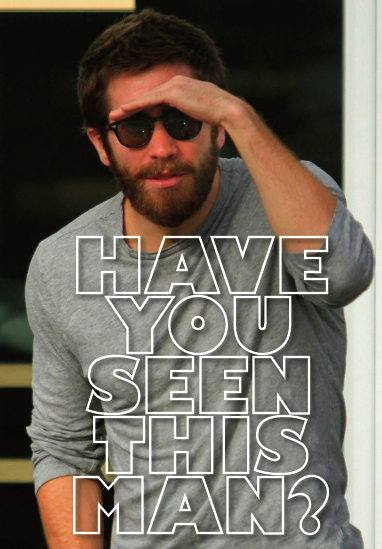 JA from MNPP here. perhaps you've heard that Jake Gyllenhaal just left CAA, his agency of fifteen years? He's not homeless or anything, he's taking up residence inside WME, but coming as this does only a couple of months after leaving his longtime manager we Gylenhaalics are definitely left to wonder what's gone wrong.
JA from MNPP here. perhaps you've heard that Jake Gyllenhaal just left CAA, his agency of fifteen years? He's not homeless or anything, he's taking up residence inside WME, but coming as this does only a couple of months after leaving his longtime manager we Gylenhaalics are definitely left to wonder what's gone wrong.  Gyllenhaalic
Gyllenhaalic 


